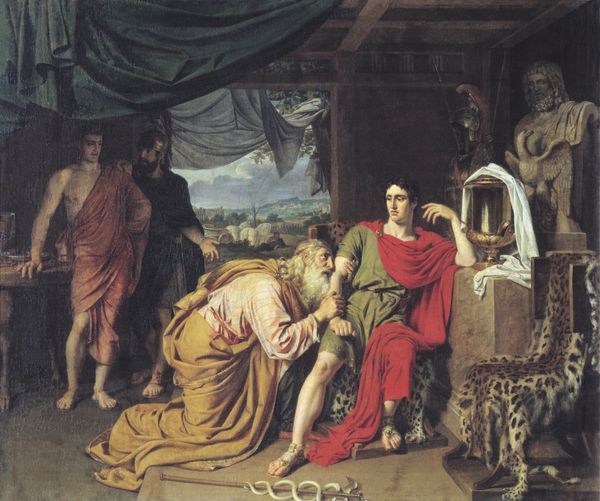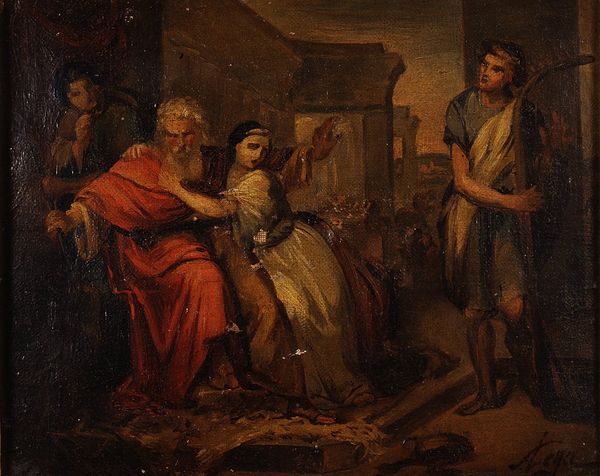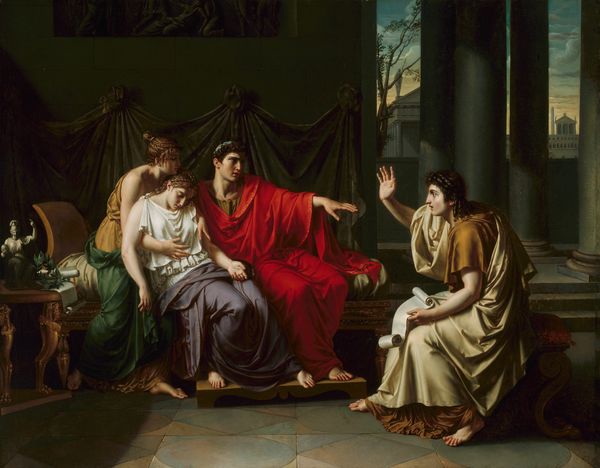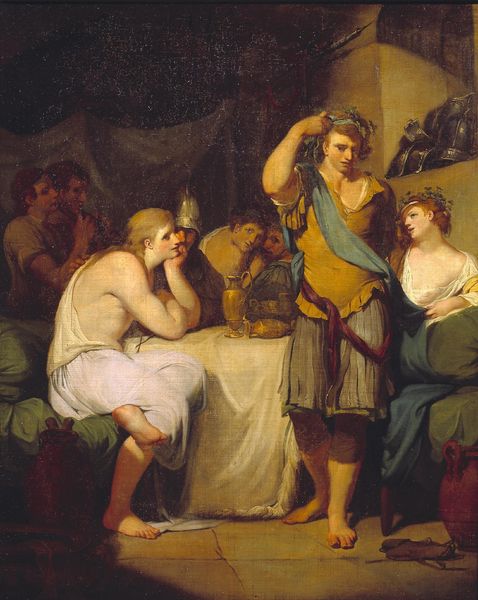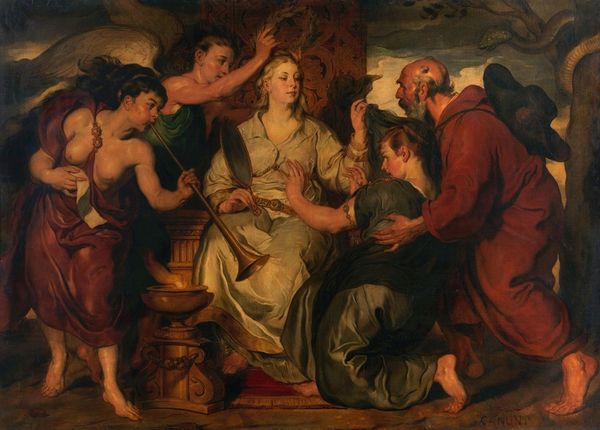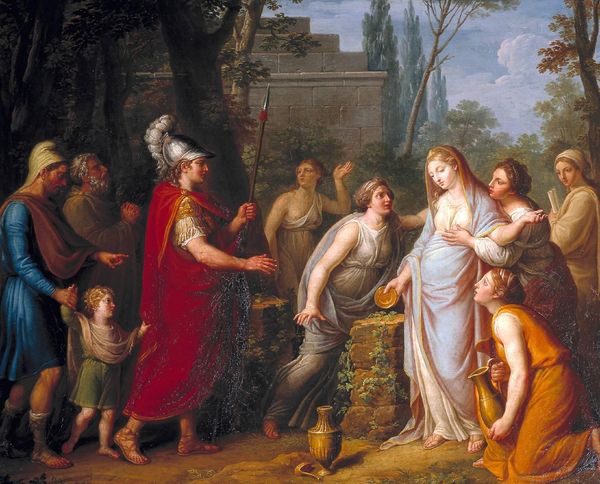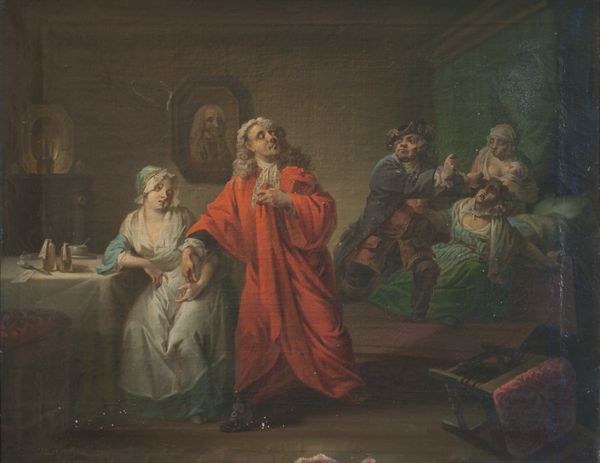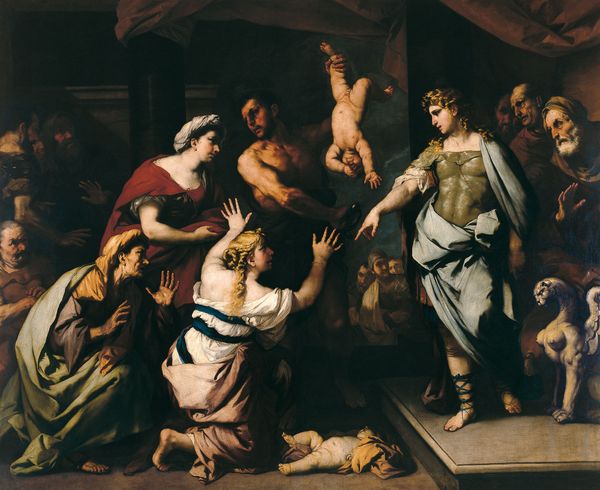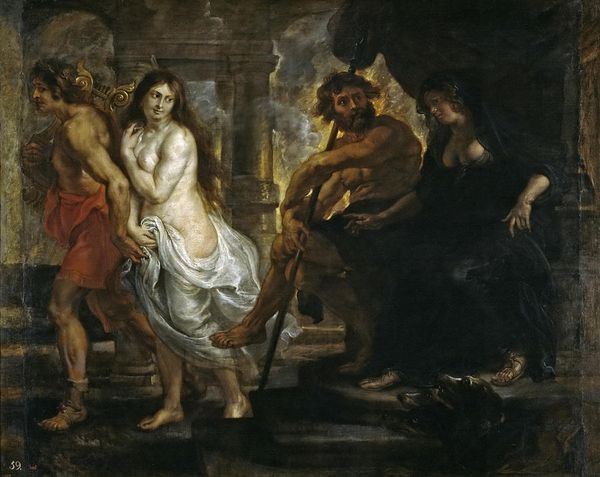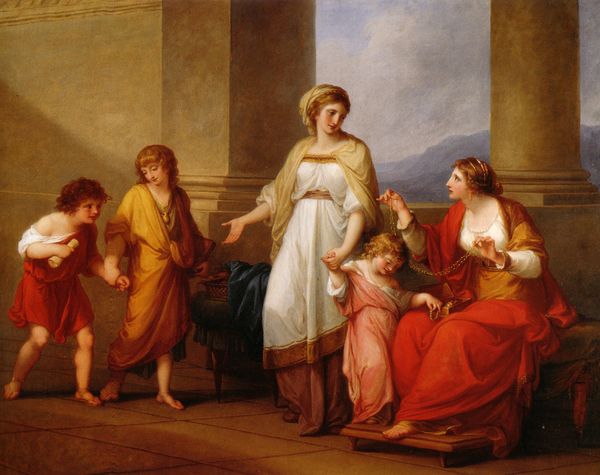
David calming Saul's fury with the harp 1852
0:00
0:00
silvestrolega
Galleria dell'Accademia di Firenze, Florence, Italy
Dimensions: 133 x 174 cm
Copyright: Public domain
Editor: Silvestro Lega painted "David calming Saul's fury with the harp" in 1852 using oil paints. The scene feels really intense, almost claustrophobic, and the contrast between David's calm demeanor and Saul's clear distress is striking. How do you interpret this work in relation to power dynamics? Curator: That’s a fantastic observation. Considering the historical context, it's crucial to understand this not just as a religious narrative but also as a commentary on power and its effects. Saul, as king, embodies patriarchal authority, yet he is visibly unstable and reliant on David, a young, almost androgynous figure who wields the power of music and art. This dependence unsettles the established social hierarchy. Doesn't this scene expose the vulnerability inherent within seemingly absolute power? Editor: That's an interesting point. It's like Lega is showing us the cracks in Saul's armor. I hadn't considered David's youth and perceived androgyny playing into this. What does that reveal to us? Curator: David’s ambiguous representation is intriguing. His youthful innocence contrasts starkly with Saul's aged, bearded presence. We can view David as a disruptive force, one that uses emotional intelligence and art as tools for negotiation, tools not typically valorized within dominant masculine power structures. Consider the roles of the women in the scene, who try to subdue Saul with gentle restraint, creating tension in this gendered performance. Editor: So the painting might be subtly suggesting alternative ways to wield influence beyond traditional masculine displays of force? Curator: Exactly! And beyond traditional social conventions! It is highlighting the potency of empathy, emotional awareness, and creative expression – characteristics historically devalued in patriarchal settings – as valid and powerful strategies. How might recognizing these subtle assertions of power inspire contemporary dialogues around equity? Editor: This completely changes how I see the painting. I was focused on the immediate drama, but now I recognize the subversive undercurrents Lega subtly included. Thank you! Curator: And thank you for pointing out that initial feeling of claustrophobia. Perhaps that emotion highlights our own discomfort with acknowledging the fragility of those in power.
Comments
No comments
Be the first to comment and join the conversation on the ultimate creative platform.
